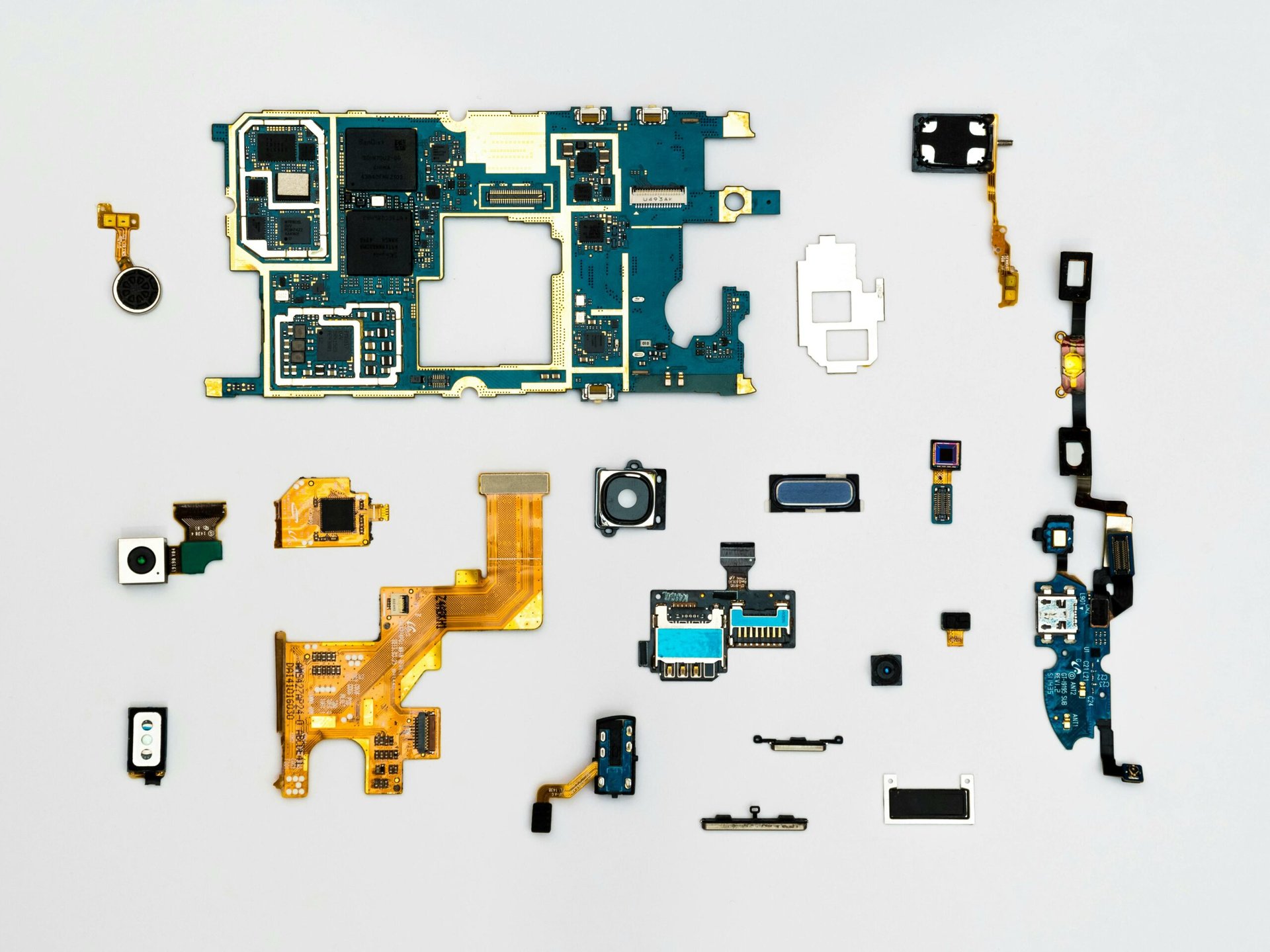
2023 saw an uptrend in demand for aerospace and defense products. What does the future hold for 2024 and beyond?
Despite the setbacks and operational bottlenecks caused by the pandemic and the ongoing instability in global economies, there is great optimism regarding the aerospace and defense industry, with an expected annual growth of 12% in earnings over the next five years.
In aerospace, domestic commercial flights had a surge: revenue in passenger miles surpassed pre-pandemic levels in many countries. This led to an increased demand for aerospace products and aftermarket services. In defense, particularly for the US, contemporary geopolitical challenges and prioritization over modernization drove demand for 2023, particularly for weapons and new-gen capabilities.
The global market for A&D is anticipated to rise between 2024 and 2031. Key players are already adjusting their strategies to address extant and emerging situations and challenges, such as talent shortages and supply chain disruptions.
While this indicates growth for the foreseeable future, aerospace and defense organizations must respond rapidly to constant change and present-day uncertainty – embracing change as they introduce new technologies and innovations.
Here are some developments to keep an eye on for 2024 and beyond.

Innovations set the tone for 2024.
A changing workforce landscape
The A&D sectors must consider new expectations that come with renewed demand and expansive innovation. The newer landscape regarding talent comes with increased salaries and employee mobility, reassessment of organization and relationships within the workplace, and a highly competitive job market.
Although the industry has surpassed pre-pandemic employment levels – which saw an increase of 4.87% in 2022 compared to 2021 – aerospace and defense companies are likely to face critical talent shortages. These shortages may harm production demands as domestic travel, reliance on satellite technology, and geopolitical tensions reach breaking points.
In its current state, the industry is failing to attract new talent. In the National Association of Manufacturer’s (NAM’s) 2023 third-quarter outlook survey, about three out of four manufacturers stated that attracting and retaining talent is quickly becoming a number one priority.
With that in mind, manufacturers find themselves having to compete for skilled talent not only within the A&D sector but against other industries with manufacturing as well.
Companies must also keep in mind that most of the talent they’re most likely looking to hire will be from the newer generation. This newer generation is keen on finding careers with a wide impact and well-defined purpose.
Retention and Attrition
There are significant job openings in the manufacturing sector at 604,000 in August 2023, with quits accounting for almost 70% of separations. This is despite the continued flux of new hire talent. With the high-talent requirements of the A&D industry, including specialized education and security clearances, comes a necessity to focus on retaining talent.
With most of these A&D companies having a background with deep experience, a rich history, and well-oiled networks, the guaranteed contingency to ensure these standards are set in place is to retain highly qualified professionals.
There is also an ongoing exodus of the older workforce, many of whom are retiring.
As such, aerospace and defense companies must move to use technology to replenish, empower, and enhance their workforce.
Companies should include more programs in response to these technological advancements, like training and research, to ensure their younger professionals are well-trained and prepared to uphold standards, quality, and expectations. The A&D sector will look to inspire and broaden its workforce’s horizons to help expand operations.
In essence, manufacturing organizations, and most especially the aerospace and defense industry, might need to restructure or, at the very least, re-assess their organization and existing functions to continue maintaining and nurturing a highly effective workforce.

Supply Chain Complexity
There is a growing unpredictability regarding the supply chain. This unpredictability stems from shortages in skilled labor, attrition, unavailability of certain materials or parts, and inflation. These may lead to delivery and production delays and increased raw materials or components pricing.
In particular, sourcing raw materials remains a unique challenge for aerospace and defense companies. These critical minerals used to support defense are minimal in amount and production capacity. In the United States, for example, there is a 100% reliance on net imports of gallium from other countries such as China.
The inherent dependency on these critical resources is a huge complicating factor. In fact, with the increasing geopolitical tension and demand for next-generation defense capabilities, A&D companies may be faced with restrictions on several key imports due to increasing trade barriers, sanctions, or policy shifts.
When it comes to other less critical yet similarly limited parts, the industry has been slow in creating alternative sources due to qualification processes and industry requirements that bog down progress.
As such, companies in need of such materials, parts, and components might look into creating strategic reserves and inventory to weather the storm while exploring new production options.
Other strategies include cross-border manufacturing and working with friendly international partners to enrich its defense production capabilities. A&D companies are also looking into new manufacturing methods that may allow the use of alternative materials and avoid sole-source manufacturing.
Lastly, there’s an expected holistic adaptation of digital technologies to digitalize the supply chain and automation. Companies may even digitalize and model the supply chain (or create digital twins) to improve processes and oversee the whole chain more transparently.

Industry 4.0
A&D companies are continuing to advance and integrate more digital products, and this process is expected to accelerate further in 2014. Industry frontrunners are already utilizing new digital technologies such as model-based enterprising and digital twins.
Companies have been moving to digitalize many systems for a while already. They aim to use digital technologies to enhance products and services, help capitalize on growth opportunities, and improve operational efficiency.
The aerospace and defense industries are characterized by highly complex environments, customer needs, regulations, and product specifications. It promises to become an opportunity and sign for companies to modernize their processes and tools by embracing digital technologies.
Digitalizing once fully analog processes and systems aims to overhaul production processes to elevate standards and increase yield and efficiency.
Internet-of-Things
Internet-of-Things technology allows manufacturers to leverage digital systems and their ability to interconnect and process data and information from factory machines, assemblies, and other devices and tools. IoT technologies allow companies to gain better insight into their operations environment.
This can help manufacturers reduce downtime, understand machine performance, and optimize manufacturing stages.
Similarly, an offshoot of this technology is the Internet of Military Things, which is another game-changer in military operations. IoMT facilitates improved decision-making, better situational awareness, precise automation, and a secure way to share data. Sensing and computing devices will be worn by persons on duty or embedded in their equipment to provide diversified, real-time data collection – apart from applications on other military equipment.
Models-based systems engineering
Models-based systems engineering allows for the virtual design, analysis, and validation of systems through models and simulations. Models-based systems engineering aims to shorten the time to qualify and certify new manufacturing lines and systems. Models-based engineering is frequently relied on to discover defects and issues earlier in the design process while minimizing risk and resource upkeep.
MDSE aims to improve on traditional documentation-centric systems by combining systems engineering and models: providing a visual way to layout, document, and test systems between roll-outs.
Models-based systems engineering can simulate the flow of changes both forward and backward. It can also help engineers perform compatibility analyses, making it a key to traceability, change & risk management, and automation.
MBSE can improve communication and collaboration between teams and improve the efficiency of processes by establishing a single source of truth that is also easy to manage.
Digital Twins
Digital twins are digitalized models of planned or actual real-world products, systems, or processes that serve as indistinguishable digital counterparts for the uses of simulation, integration, monitoring, testing, and maintenance.
For example, Rolls-Royce uses digital twins for their engines for their “IntelligentEngine” program. This program creates digital twins for each engine they produce, allowing them to gather data across many parameters from onboard sensors.
Digital twins are beneficial in many ways. It allows companies to track parts and components through their life cycle to improve protocols and designs or make changes and overhauls. Digital twins are also especially useful for the aftermarket services sector, fostering provider readiness and expertise.
By using the massive amounts of data produced by A&D systems, both individually and as systems, companies can better predict how and when systems or components need to be serviced or upgraded and mitigate potentially life-threatening failures or operational risks.
Digital Enhancements
The new demands for innovation, wartime defense, and sustainability will likely result in rapid technological advancement. Apart from digitalizing the manufacturing process, A&D companies also look into applying emergent technologies. At the center of these technologies is artificial intelligence, augmented reality tech, and wearable smart devices.
AI helps streamline operations, enhance creativity and productivity, and enable real-time data synchronization. Generative AI may also be a great boon to allowing the opportunity to develop better energy-efficient designs and low-carbon products.
AI can also serve as virtual field assistants that can support engineers and manufacturers with changing problems by helping with problem-solving and other activities. Some companies may even be looking into AI to help curb the effects of talent shortages.
To address skill gaps or environmental problems, wearable smart tech and augmented reality are also envisioned as a new way to expand how we can explore and manipulate our surroundings.
Augmented reality is quickly becoming a way to safely train and gain experience without affecting real-world physical objects and tools. Wearable tech allows employees to integrate their apparel into their work, promoting safety and enhancing productivity. A combination of both could be the avenue for those working in the field who may need quick access to reliable information to make better decisions and keep them safe.
For defense, the main advantage is that the military can apply digital enhancements to equipment, flights, and training. Systems may use virtual reality and AR to offer safe, highly customizable training environments, terrain diversity, better access to mission rehearsals, and enhanced spatial awareness. Pilots may be trained with AR to help simulate threats or targets, and soldiers can become more effective with headgear that provides a variety of data to help in decision-making and threat elimination.
Although there is great opportunity belied by the digital revolution, it also underscores an important point regarding security and risk management. Aerospace and defense companies will need to strengthen their data security and management efforts and stay up-to-date and prepared for contemporary cyber threats and risks.
A&D companies should look to creating a mindset change in response to digitalization. What was once an option should now be considered a requirement for achieving long-term success.

Evolving technologies and consumer preferences; growth in spending
There is a notable increase in spending for commercial and defense sectors, with spending exceeding pre-pandemic levels. In 2024, there is likely to be an additional demand generated by ongoing political tensions and an increase in global and domestic travel.
On the other hand, the increased spending comes with additional challenges, such as the necessity of rapidly developing new capabilities for defense and wartime. The US DOD, particularly, is funding developments across various entities in response to global advancement. The commercial aviation space will need to supplement the number of available aircraft and other necessary components as demand for air travel increases amid a globally interconnected economy.
There is also a movement that aims to see a shift to more sustainable manufacturing and material sourcing models, with decarbonization proving to be the toughest and one of the most important challenges. Aimed at reducing the negative impact of carbon emissions, companies are now expected to utilize advanced technologies, sustainable alternatives, and newer propulsion methods. A&D companies might also consider reconfiguring the supply chain to better navigate these expectations.
Notably, there is also a growing market in the field of advanced air mobility. Advanced air mobility or aerial mobility is a revolutionary urban mobility approach involving flying cars and cargo drones that use electric vertical takeoff and landing (eVTOL) technology. A relatively new technology, the market for AAM is estimated to reach $115 billion annually by 2035, with commercial flights aimed to begin as early as 2024.
Finally, momentum is being gained in a new space economy focusing on three key areas: the launch industry, advanced satellite technology, and a developing space tourism industry. Some satellites are now capable of transmitting data at the speed of hundreds of gigabytes or terabytes per second, called Very High Throughput Satellites. Older satellites are also being replaced by miniaturized versions, most geared toward utilizing Satellite IoT.
Conclusion
New horizons are becoming within reach, and with it comes a rise in new threats, risks, and challenges posed by an inevitable boom in the aerospace and defense sectors. With A&D noted as requiring a flexible, dynamic workforce composed of many different types of workers, it’s important to consider how to develop and retain talent, keep teams zeroed in, and give them tangible purpose.
CadCrowd.AI understands mission-critical teams and how the evolving landscape may affect talent acquisition and retention, especially for skilled engineering talent. Schedule a call with one of our technical recruiters and learn how we can help you equip your workforce with the best engineers.



